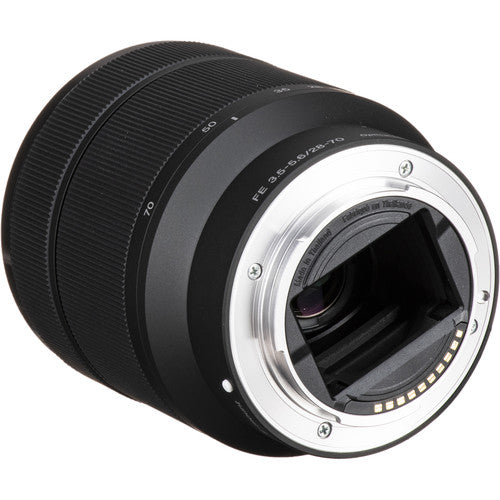Product Description
Sony FE 28-70mm f/3.5-5.6 OSS Lens
- E-Mount Lens/Full-Frame Format
- Aperture Range: f/3.5-5.6 to f/22-36
- One ED & Three Aspherical Elements
- Linear Autofocus Motor; Internal Focus
- Optical SteadyShot Image Stabilization
- Dust and Moisture-Resistant Construction
- Rounded 7-Blade Diaphragm
A Versatile Standard
A top pick for users looking for a lightweight all-around zoom, the FE 28-70mm f/3.5-5.6 OSS Lens from Sony is a great go-to for full-frame E-mount shooters. The lens has a compact, portable design that is ideal for everyday, walkaround use and its versatile wide-angle to portrait-length range suits working with a variety of subject types.
Optical Design
One extra-low dispersion glass element is featured in the lens design to help reduce chromatic aberrations and colour fringing for improved clarity and colour neutrality.
Three aspherical elements are incorporated in the lens design to reduce astigmatism, field curvature, coma, and other monochromatic aberrations.
Rounded seven-blade diaphragm contributes to a pleasing bokeh quality when employing selective focus techniques.
Autofocus, Image Stabilization, and Design
An internal focus mechanism and linear motor contribute to faster, more responsive system and easier handling.
Optical SteadyShot image stabilization helps to minimize the appearance of camera shake for sharper imagery when shooting handheld with slower shutter speeds. This stabilization system can be combined with select camera's sensor-shift type image stabilization for more effective control of camera blur.
Dust- and moisture-sealed design better permits working in inclement conditions and rubberized control rings benefit handling in colder temperatures
For full specifications click Here






















